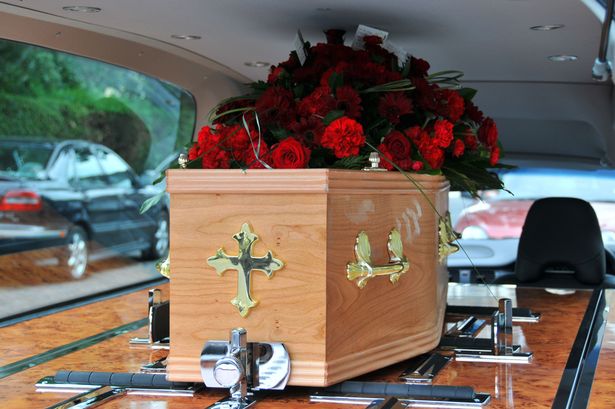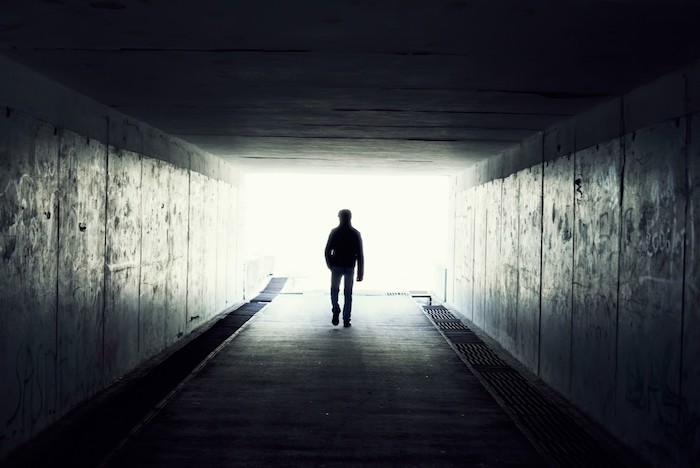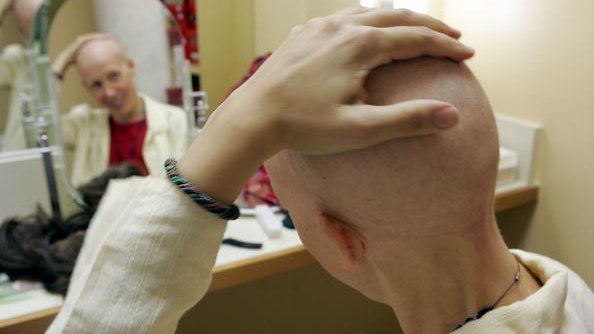
by Kat Eschner
More than 3.35 million people died last year in the United States—far more than the death trade was easily able to handle. Over 70% of those deaths were attributable to COVID-19, a recent analysis found. Others were related to the disruption of the pandemic and some to simple chance. In hotspots around the country, funeral homes, cemeteries, and crematoria were under unprecedented stress as a system designed to accommodate a predictable number of deaths (around 2.8 million in a more normal year like 2019) confronted the challenges of caring for many more.
In New York, an early hotspot, “the adjectives that come to mind were ‘overwhelming’ and ‘intense,’” said Mike Lanotte, executive director of the New York State Funeral Directors Association. In more normal times, Lanotte said, New York State sees about 400 deaths per day. That’s the number that the funeral homes, crematoria, and cemeteries in the state are set up to handle. Occasionally, something like an unusually bad flu season causes a local spike in the number of deaths, but the system in New York State and elsewhere has proved fairly resilient over time.
During those first months in New York and New Jersey, that wasn’t the case. Lanotte said his members—and their colleagues in the neighboring state—were snowed under by demand. “It probably lasted through the early part of summer 2020 before it really started to come down to a point where the system could really catch up,” he said.
New York’s outbreak, with its refrigeration trucks to store bodies, became the face of the early pandemic for many Americans and conjured up memories of 9/11, the last time local death care infrastructure was so overwhelmed by a disaster. But deaths spiked in spots all over the country throughout 2020, pushing death care professionals to their limits.
People who work with the dead aren’t often discussed. “You need their help when you need it,” said Barbara Kemmis, executive director of the Cremation Association of North America, “but my funeral and cemetery director and crematory owner [members] are never listed in any of the ‘Thank you, first responders’ things that are out there.” People in the business understand their role, she said, but the last year on the front lines has been a difficult one.
COVID-19 cases are spiking again across the country now, with a more dangerous new variant and low vaccination rates wreaking havoc. The pandemic is far from over for America. But better knowledge of how to treat and contain the disease, combined with vaccination, means those in the death trade aren’t facing anything like the nationwide deluge of last year. As they begin to take stock, industry leaders and advocates say their profession has been irrevocably changed by the pandemic.
Fast technological change, an increase in cremations, and just the sheer scale of death they had to handle have all contributed to an epidemic of burnout and many people leaving the business. At the same time, revenues last year—usually driven by funerals of the kind that weren’t possible under COVID-19 restrictions—were down, said Steve Spann, president of John A. Gupton College, which serves the mortuary business. “All funeral homes, I think, will determine that they took a pretty decent hit financially,” he said, pegging that impact in the 20% to 30% reduction range.
In the short term, that means there just aren’t enough people in the business. In the medium term, that might mean further consolidation in the already highly consolidated death business, and the loss of funeral homes that serve specific communities, such as the Black community. In the long term, it’s hard to say. But one thing is for certain: The death business will never return to the way it was in 2019.
‘Last responders’
Alabama funeral director Randy Anderson got his first call to pick up the body of someone who had died from COVID-19—a “decedent” in funeral argot—on or around March 27, 2020. That person died in a nursing home, one of the early locations where the disease spread like wildfire.
“That began the multitude of deaths that we would have, about 25% of the deaths that we handled in 2020,” he said. In total, the two funeral homes he owns, Radney Funeral Home and Langley Funeral Home, handled more than 100 COVID-19 deaths in 2020, representing an increase of 60 to 70 calls to pick up bodies over 2019, he said.
That same recent analysis of excess death—the term for numbers of the dead that go beyond the expected—showed extra deaths occurring all over the country, although the impact was distributed in time and space. Writing in the scientific journal JAMA Network, the study authors identify Alabama as the state that endured the fifth-highest number of per capita excess deaths in 2020, after Mississippi, New Jersey, New York, and Arizona.
After the H1N1 pandemic, Anderson followed CDC instructions and continuously maintained a high enough level of supplies to embalm 100 bodies, along with PPE. When COVID-19 hit, he was in a position to share supplies with local health care providers and protect his own team.
But all the supplies in the world couldn’t prepare him and his staff for what they would face. “That veterans’ nursing home, we were there probably five or six times a week during the heat of the crisis,” Anderson said. They also made numerous trips to the morgues of local hospitals and to people’s homes.
“We were working 12- to 14-hour days from about April to about October, November,” he said. The toll of all that work was physical, but—as for others on the front lines of the COVID-19 pandemic—it was also psychological.
Those in death care have a twinned role, said Lanotte. They are public health practitioners who ensure that when patients leave the medical system as a dead body, they are put to rest. In that role, they work with local health officials. But they are also the first point of care for people grieving the loss of a loved one.
Last year, when daily deaths surged, the public health role had to take the front seat, he said. But their other role remained. While coping with the demands of the pandemic and learning, along with the rest of us, about social distancing and other measures, funeral directors and other death care professionals sought to include grieving families in their loved ones’ final disposition.
That took innovation. Kemmis lost her grandmother last year. She and her mother couldn’t travel to the graveside service because of the pandemic, but they were still able to participate thanks to one funeral director. “She was standing at the graveside, holding up her cell phone,” Kemmis said. She and her mother watched on Facebook Live.
To Kemmis, that’s a sign of how far “last responders” will go for those left behind. “She didn’t have to do that. She didn’t charge us to do that. And I didn’t even know to ask for that.”
Rushing to catch up
Kemmis’s experience is one example of a broader trend of death care professionals trying new techniques to connect loved ones with the deceased. While Zoom funerals and Facebook memorials were new for many consumers, they represent an even bigger change in the slow-moving, traditional funeral industry.
“Death care is an old profession. They have a lot of old practices,” said Poul Lemasters, a former embalmer who is now general counsel for the International Cemetery, Cremation, and Funeral Association. “I know a lot of people who even still have fax machines.”
When the pandemic began, he said, death care practitioners found themselves navigating everything from regulatory issues around digital correspondence to dramatic technology shifts in their own workplaces. That embracing of technology “advanced funeral service by a decade or more,” said Kemmis.
Mortuary education is rushing to catch up. While in-person funeral attendance around the country is more possible now than it was a year ago, said Spann, “a good portion [of families] still want livestreaming.” John A. Gupton College was beginning to offer digital marketing instruction, he said, but COVID-19 has accelerated that part of the curriculum.
In the past, “almost everything that a consumer would do with the funeral director would be done face-to-face in the funeral home,” said Lanotte. In some parts of the country, that state of affairs was entrenched in law, further complicating the transition to a new way of doing things.
In New York State, for instance, cemeteries, crematoria, and funeral homes were legally not allowed to accept digital signatures on their documents. That meant grieving families had to provide a physical signature and send the documents by FedEx or other means—a process further complicated if they were quarantined by COVID-19 themselves, writes Joe Mahoney of CNHI. This particular law was recently changed. But it’s part of a larger dynamic in the death care industry whose fading has been hastened by the pandemic.
There was a time when funeral homes and artfully embalmed and displayed bodies were at the center of death care for nearly all Americans. That’s not true anymore, said Tanya Marsh, a professor of law at Wake Forest University who studies the funeral and cemetery trades. Cultural attitudes toward death and final disposition are slowly but surely shifting, she said, a trend exemplified by the increased adoption of cremation.
For the past few decades, the national cremation rate has grown by 1% to 2% per year. In 2016, that rate rose above 50% for the first time. “Cremation has been a game changer,” said Marsh. It allows for different approaches to final disposition and mourning because cremated remains don’t require a specialist to handle them, as an embalmed body does.
Although many predicted a spike in cremations during the pandemic, the national cremation rate went up only by a predictable 1.5% in 2020, according to numbers from the Cremation Association of North America. In some areas, however, the cremation rate increased far more. In the first six months of 2020, for instance, the cremation rate in New Jersey went up by more than 3%. These regional increases may endure, Marsh noted. “The question is going to be, Do people associate [cremation] with COVID?”
If they do, that could negatively impact the increase of cremation rates. But Marsh isn’t sure. “There’s a really strong social normalizing aspect of funeral practices,” she said. If people had a loved one cremated for the first time out of necessity but found it to be a positive experience, she added, it’s likely they will seek out cremation for future final dispositions.
The practice has a lot going for it. It’s generally less expensive than a full burial, for one thing, and it gives families time to gather and say goodbye in their own way. It allows for very different options than the big funeral many of us see on television. But for funeral homes, it represents generally lower revenues and a changing role. “They have to change their identity from being embalmers to event planners,” said Kemmis. “That’s what the trends are pointing to. And that’s hard.”
Tomorrow’s death care
A changing role, combined with the other stresses and changes of the pandemic, is having a huge impact on the death trade. Some are leaving it, while those who remain are dealing with the trauma of being on the front lines. After things settled down in his area, Anderson brought in a PTSD counselor to meet with his staff. “We view what we do a little differently now,” he said.
Like many in the profession, Anderson himself caught COVID-19. He was out of work for three months and hospitalized for a week. Seeing the ravages of the disease firsthand made the prospect of his own illness more alarming. “I had buried people that died with [COVID-19],” he said.
Kris Busini, who was an executive assistant for two funeral home owners in Connecticut through the worst of the pandemic, also caught COVID-19, along with almost everyone else at his funeral home. “We were terrified,” he said. The only one on his team who didn’t catch COVID-19 was their embalmer, a young man who worked long days in the funeral home’s morgue, away from other staff.
Busini was drawn to the death care industry because of the care involved, for both those grieving and the deceased. “There’s a tenderness to it that I really appreciated,” he said. He left, in part, because of the stresses of the pandemic.
The exodus from the death care profession will likely drive further consolidation, Kemmis said. After the past year, some members of the profession who were contemplating retirement or leaving their practice are choosing to sell to conglomerates, she noted.
Lemasters handles some of those transactions as part of his consulting firm and has seen a spike in the past few months. “This has pushed a lot of people to say, ‘I don’t want to do this anymore,’” he noted.
But the trend may be slow and unpredictable. Death on the scale of what has happened during this pandemic altered the future value of the death trade, because in some places, the boomer generation whose death peak was anticipated to be more than a decade from now happened early.
“Between now and 2025-ish, we might actually see a decline in deaths in some areas,” Kemmis said. That short-term decrease may change the valuation of funeral homes, crematoria, and cemeteries—at least for now. But it may also create time to train up new embalmers, crematorium operators, funeral directors, and others in a vast profession, Kemmis said. The death professionals of tomorrow will graduate into an industry that’s been fundamentally altered by the pandemic, in a country only beginning to grapple with its implications.
Marsh expects to see further early retirements and industry exoduses over the next three to five years. “There’s a ton of burnout,” she said.
Some seeds of what’s coming next are beginning to unfurl. The professional associations that death care professionals rely on are starting to host in-person meetings and conferences, the first since before the pandemic. For those who have stayed in the profession, it’s an opportunity to regroup and examine the recent past. During a recent gathering of about 180 members of the death trade hosted by his organization, Lemasters said, “there was absolutely a sharing of stories.” There’s a new feeling of comradery, he said.
As death care professionals reckon with the past year and a half, the industry is also trying to plan for the future. “That’s a full death care industry conversation,” said Lenotte. Part of that conversation is preparing for the next pandemic. Anderson recently presented on that topic at a state convention. “The first thing is just take care of your staff,” he said.
Complete Article ↪HERE↩!







